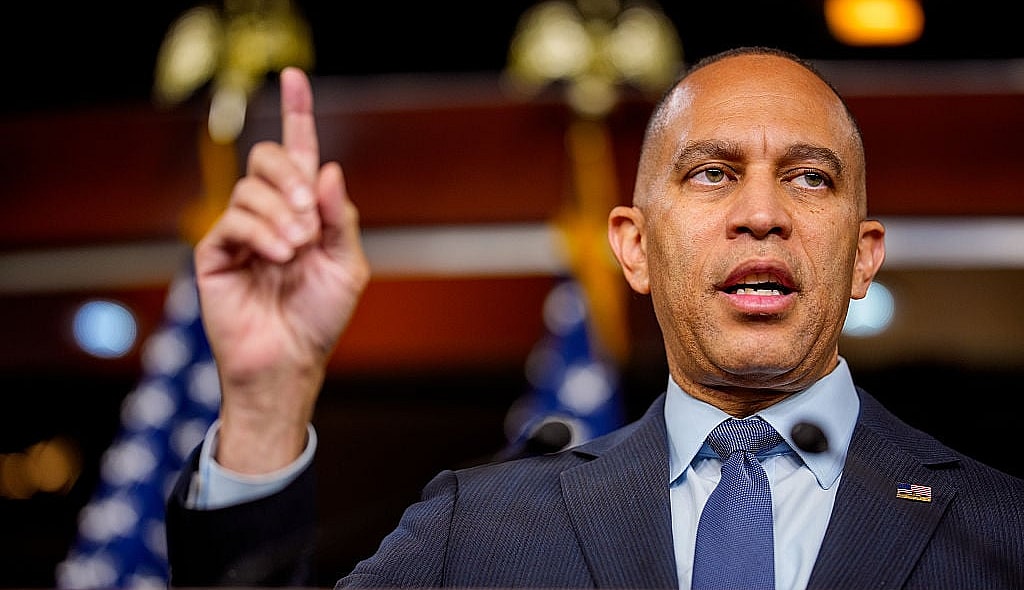Human rights organizations are rallying behind the U.S. Supreme Court’s decision to temporarily permit U.S. Border Patrol agents to resume the removal of razor-wire fencing along the Texas border, which has placed Black and brown migrants’ safety in jeopardy.
Cody Wofsy, deputy director at American Civil Liberties Union (ACLU) Immigrants’ Rights Project, told theGrio, “It is gratifying to see the Supreme Court put a stop” to Texas Gov. Greg Abbott’s efforts that advocates say are anti-immigrant.

He said that these anti-immigration tactics stem from “a real fear of the other.” Wofsy explained that it’s a fear of “people coming from other countries, people who tend to be Black and brown, and people of non-Christian religions.”
Ari Sawyer, U.S. border researcher at Human Rights Watch, told theGrio, “The immigration model is inherently racist. It’s based upon years and years of colonialism.”
“All of these policies that we see on the books now disproportionately impact and discriminate against Black and brown migrants,” they said.
Sawyer explained that Black and brown migrants usually face danger when migrating to the U.S. because they do not have access to the same “legal pathways” as those coming from European countries.
“That’s why we see at the border a disproportionate number of Black and brown migrants dying to cross the border – dying in search of a better life,” said Sawyer.

On Monday, the U.S. Supreme Court allowed federal border agents to temporarily remove a miles-long razor-wire fence that Texas authorities placed near Eagle Pass, a city that borders Mexico, to stop migrants from entering the southern state illegally.
Last year, the Department of Homeland Security ordered U.S. Border Patrol agents to remove the razor-wire fence because it was preventing agents from doing their job and posed a threat to migrants seeking refuge from their home countries where they experienced harm such as political unrest, persecution, and racism.
In October 2023, the state of Texas sued the Biden-Harris administration and contended that U.S. Customs and Border Protection agents unlawfully cut down the fence.
In November 2023, a U.S. District Court judge ruled that the Biden-Harris administration had the authority to do so. Texas then appealed, and in December 2023, the 5th U.S. Circuit Court of Appeals ruled in favor of the Lone Star state, temporarily blocking border patrol agents from removing the fence.
Earlier this month, the Biden-Harris administration requested that the Supreme Court issue an order against the state, blocking the 5th Circuit Court’s injunction, which the justices granted in a 5-4 vote.

Wofsy said the razor-wire fencing is not a way to regulate immigration but rather “incredibly dangerous and irresponsible.”
“This just redirects people to other parts of the border. Potentially to much more dangerous areas where they will attempt to cross into the country,” he said.
This is just the latest move by Gov. Abbott, who spent years cracking down on illegal immigration.
On Jan. 12, a woman and two children drowned while attempting to cross the Rio Grande River from Mexico to Texas. Texas military officers prevented U.S. Border Patrol agents from accessing the area where the trio were in distress due to Abbott’s immigration orders.
Last year, the Republican governor placed a 1,000-foot-long buoy barrier in the Rio Grande River, separating Texas’s border from Mexico. A federal judge has since ordered the southern state to remove the floating barrier from the river.
In 2022, he, along with Florida Governor Ron DeSantis, bused thousands of migrants from their states to Democratic-led cities such as New York and Washington, D.C., while mocking liberal leaders for saying that they welcome migrants.

U.S. Rep. Yvette Clarke, D-N.Y., told theGrio, “Governor Abbott’s actions [have been] unconstitutional and inhumane beyond reason.”
“Cruelty to migrants is not a policy solution but a dog whistle, fanning the flames of hate and xenophobia,” she said.
Wofsy said, “People have the right to seek asylum” in the U.S. “The asylum statute specifically says if you are in the United States and you’re on U.S. soil, you have the right to seek asylum whether or not you enter at a point of entry,” he explained.
The ACLU director said the U.S. and countries across the globe have “committed to offering protection for people fleeing persecution and torture in their home countries.”

Next month, the 5th Circuit Court of Appeals will hear oral arguments in this case to determine whether border patrol agents violated Texas law by cutting down the razor-wire fence. “The U.S. Supreme Court will ultimately have the last word,” Wofsy said of the pending case.
“Giving Texas the greenlight to tell border patrol agents where it can and cannot operate and keeping it from accessing part of the border and accessing migrants is essentially going to create more and more dangerous situations,” he argued. “People are going to be in danger and potentially killed because of what is essentially a political stunt.”
Sawyer said the Biden-Harris administration should not stop here with cracking down on Abbott’s anti-immigration agenda. They “should go further,” they said, by ensuring migrants can “access their right to seek asylum.”
They urged, “If Congress and the courts and the Biden administration wants to see border management and orderly crossings, fewer deaths and safer communities…it needs to open more safe and legal pathways.’
Recommended Stories
Never miss a beat: Get our daily stories straight to your inbox with theGrio’s newsletter.









